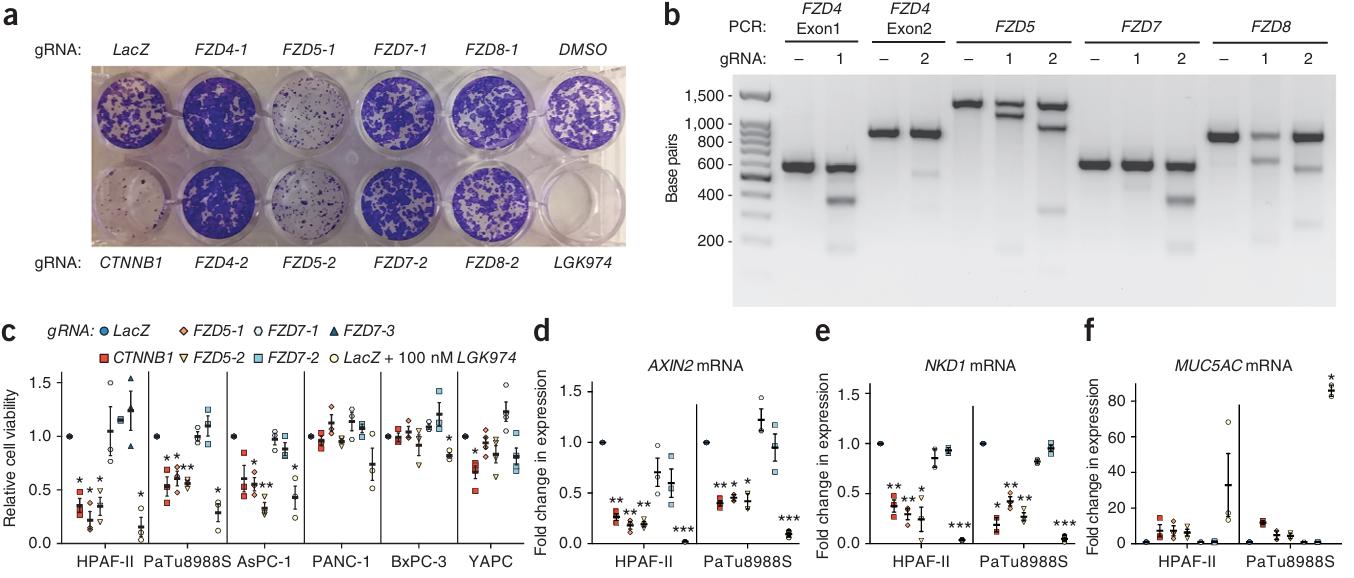Cas9 Stable Cell Line - HPAF-II
Cat.No. : CSC-RO0170 Host Cell: HPAF-II
Size: >1x10^6 cells/vial Validation: T7 Endonuclease I assay
Cat.No. : CSC-RO0170 Host Cell: HPAF-II
Size: >1x10^6 cells/vial Validation: T7 Endonuclease I assay
| Cat. No. | CSC-RO0170 |
| Product Type | Cas9 overexpression stable cell line |
| Introduction | Clustered regularly interspaced palindromic repeats (CRISPR)/Cas9 is a gene-editing technology that contains two essential components: a guide RNA (gRNA) to match a target gene, and the Cas9 (CRISPR-associated protein 9) endonuclease which causes a double-stranded DNA break, allowing modifications to the genome via nonhomologous end joining (NHEJ) or homology-directed repair (HDR). |
| Cell Line Information | HPAF-II-Cas9 cell line is engineered to stably overexpress Cas9 nuclease. The Cas9 nuclease in HPAF-II-Cas9 cell line has been functionally validated using T7 Endonuclease I assay. In combination with separately transfected sgRNAs, HPAF-II-Cas9 cell line can be used to efficiently generate targeted genomic modifications including gene knockout, gene knockin, gene mutagenesis, gene tagging etc. It is also an ideal cell line model for sgRNA screening and validation, either individually or in pools. |
| Target Gene | Cas9 |
| Host Cell | HPAF-II |
| Applications | 1) CRISPR genome editing, such as gene knockout (KO), gene knockin (KI), gene mutagenesis, gene tagging etc. 2) High-throughput sgRNA screening and validation |
| Quality Control | 1) T7E1 assay 2) Mycoplasma detection |
| Size Form | One vial of frozen cells, typically >1x10^6 cells/vial |
| Shipping | Dry ice |
| Storage | Liquid nitrogen |
| Species | Homo sapiens (Human) |
| Mycoplasma | Negative |
| Format | One frozen vial containing millions of cells |
| Storage | Liquid nitrogen |
| Safety Considerations |
The following safety precautions should be observed. 1. Use pipette aids to prevent ingestion and keep aerosols down to a minimum. 2. No eating, drinking or smoking while handling the stable line. 3. Wash hands after handling the stable line and before leaving the lab. 4. Decontaminate work surface with disinfectant or 70% ethanol before and after working with stable cells. 5. All waste should be considered hazardous. 6. Dispose of all liquid waste after each experiment and treat with bleach. |
| Ship | Dry ice |
Pancreatic ductal adenocarcinoma (PDAC) is a highly aggressive cancer driven by mutations in genes such as RNF43, which plays a key role in Wnt signaling. The researchers used a genome-wide CRISPR-Cas9 screen in HPAF-II PDAC cells, which are sensitive to PORCN inhibition, to identify fitness genes required for cell proliferation. By generating HPAF-II-Cas9 cells expressing Streptococcus pyogenes Cas9, they performed a forward genetic screen using the TKO gRNA library, targeting over 17,000 human genes. This screen revealed several essential genes, including core components of the Wnt signaling pathway like WLS, CTNNB1, and PORCN, and highlighted the importance of the FZD5 receptor in RNF43-mutant PDAC cells.
 Figure 1. The researchers conducted clonogenic proliferation assays in HPAF-II-Cas9 cells, transduced with lentivirus delivering specific gRNAs targeting FZD5. They confirmed gene editing through T7 endonuclease I cleavage assays and assessed cell viability in various PDAC cell lines. (Steinhart Z, et al., 2017)
Figure 1. The researchers conducted clonogenic proliferation assays in HPAF-II-Cas9 cells, transduced with lentivirus delivering specific gRNAs targeting FZD5. They confirmed gene editing through T7 endonuclease I cleavage assays and assessed cell viability in various PDAC cell lines. (Steinhart Z, et al., 2017)

Our promise to you:
Guaranteed product quality, expert customer support.
 24x7 CUSTOMER SERVICE
24x7 CUSTOMER SERVICE
 CONTACT US TO ORDER
CONTACT US TO ORDER